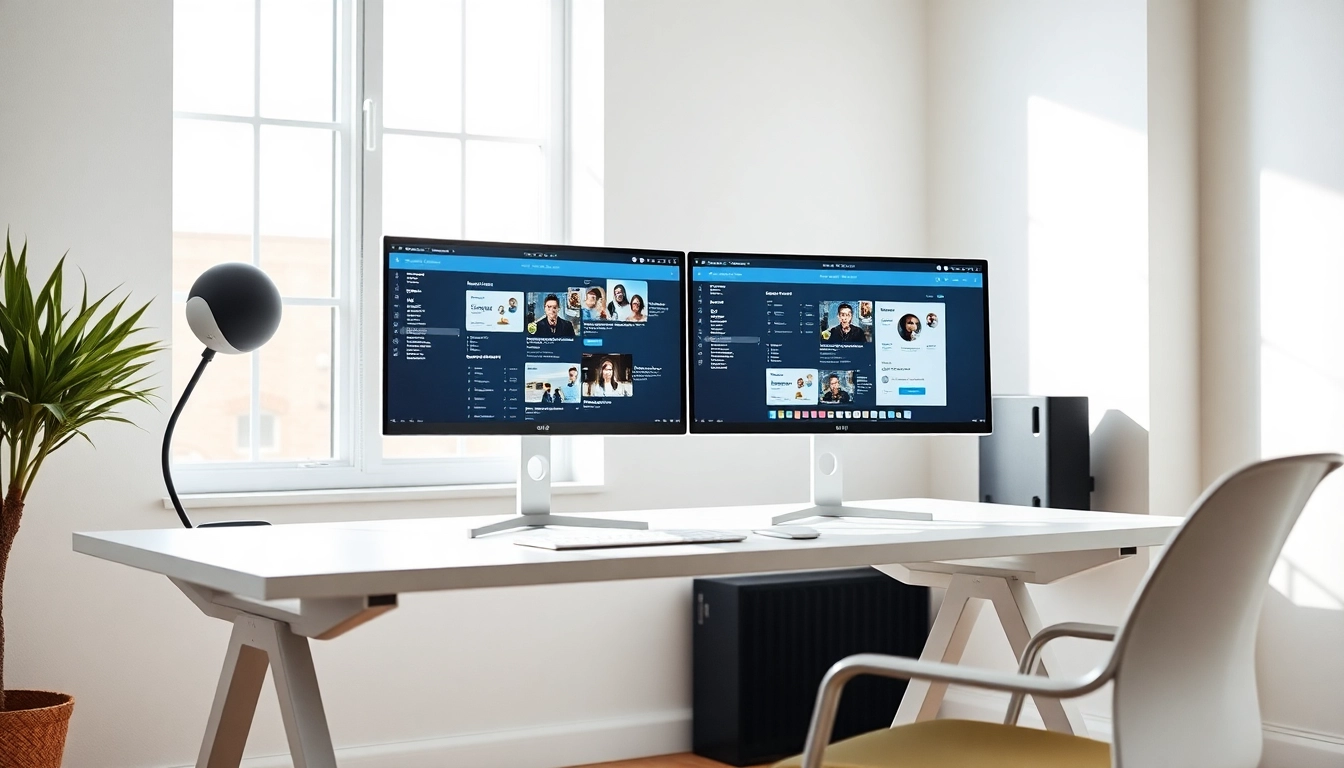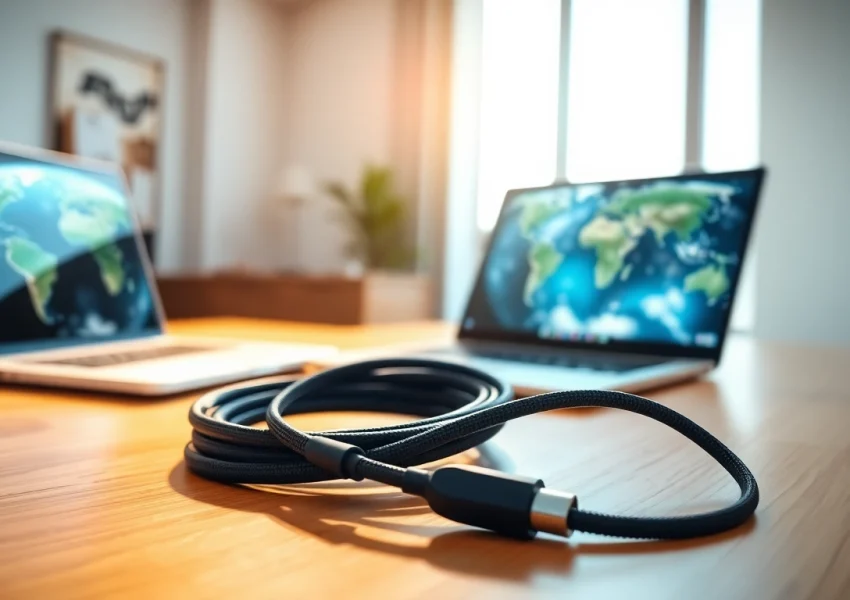Understanding Dual Monitor Setup
What is a Dual Monitor Install?
A dual monitor install refers to the process of connecting two monitors to a single computer system, enabling users to extend their digital workspace. This setup allows for enhanced multitasking, better organization of content, and increased productivity. By utilizing two displays, individuals can have multiple applications or documents visible simultaneously, reducing the need to switch back and forth between windows.
Benefits of Using Dual Monitors
The advantages of a dual monitor setup are numerous and can significantly impact productivity and workflow:
- Increased Workspace: Dual monitors provide extra screen real estate, making it easier to manage applications like spreadsheets, email, and presentations side by side.
- Enhanced Multitasking: Users can run multiple applications without the need to minimize or switch, allowing for a smoother workflow.
- Improved Focus: With the ability to dedicate one screen to a specific task, distractions can be minimized, leading to increased concentration.
- Better Collaboration: In shared workspaces, dual monitors can facilitate easier collaboration during meetings by sharing visuals across screens.
Common Challenges in Dual Monitor Installation
While the benefits are clear, a dual monitor setup can come with its own set of challenges:
- Compatibility Issues: Not all computers support multiple displays. It’s essential to verify your system’s compatibility before investing in additional monitors.
- Space Constraints: Finding adequate desk space for two monitors can be challenging in smaller workspaces.
- Configuration Problems: Properly configuring the display settings across different operating systems can be complex, leading to frustration.
- Technical Glitches: Users might encounter connectivity issues or resolution discrepancies between monitors. Troubleshooting these problems can sometimes require technical expertise.
Essential Equipment for a Dual Monitor Install
Types of Monitors Suitable for Dual Setup
When selecting monitors for a dual setup, consider the following types:
- LCD/LED Monitors: Lightweight and energy-efficient, these monitors are ideal for multiple applications.
- Curved Monitors: Offering a more immersive viewing experience, curved monitors can reduce eye strain.
- High-Resolution Monitors: Opting for 4K displays can enhance detail, making them perfect for graphic design or video editing tasks.
Cables and Connectors Needed
To connect two monitors, you will need appropriate cables and connectors. The most common types include:
- HDMI Cables: High Definition Multimedia Interface cables are widely used due to their ability to carry high-definition video and audio.
- DVI Cables: Digital Visual Interface cables are great for computers that output high-quality graphics.
- DisplayPort: This offers higher bandwidth than HDMI or DVI, making it suitable for high-resolution displays.
- VGA Cables: Although largely outdated, Video Graphics Array cables may still be found in older systems, but they support lower resolutions.
Additional Accessories for Optimization
In addition to monitors and cables, consider integrating the following accessories for an optimized setup:
- Monitor Stands: Adjustable stands can help position the monitors at eye level, reducing neck strain.
- Cable Management Solutions: Keeping cables organized prevents tangling and clutter, enhancing the workspace’s aesthetics.
- USB Hubs: Connect multiple peripherals effortlessly while reducing the number of wires attached to your computer.
Steps to Successfully Install Dual Monitors
Pre-Installation Checklist
Before connecting the monitors, ensure you have completed the following checklist:
- Verify that your computer’s graphics card supports dual monitors–consult the manufacturer’s specifications.
- Ensure that you have all necessary cables and adapters for your monitors.
- Identify the desired positions for your monitors and make space on your desk.
Connecting Your Monitors
The connection process involves a few straightforward steps:
- Power off your computer and both monitors.
- Plug the first monitor into the appropriate port (HDMI, DVI, etc.) on your graphics card, followed by the second monitor.
- Power the monitors on, then turn on your computer.
- Once the system is booted up, the operating system should recognize the additional monitor automatically.
Troubleshooting Common Connection Problems
If your dual monitor setup doesn’t function as expected, try these troubleshooting tips:
- Check the connections and ensure that cables are securely plugged into both the computer and the monitors.
- Right-click on the desktop and select display settings to make sure both monitors are detected.
- Restart your computer, as sometimes the operating system may need to refresh its detection of connected hardware.
- If a monitor is still not detected, try connecting it to a different port or using a different cable.
Configuring Your Dual Monitor System
Display Settings for Windows Users
Windows offers various options for configuring dual monitors. Here’s a step-by-step guide:
- Right-click on the desktop and select Display settings.
- Scroll down to the Multiple displays section.
- Select your display mode—options typically include Extend these displays or Duplicate these displays.
- Adjust the resolution and orientation settings according to your preferences, then click Apply.
How to Set Up Monitors on macOS
For macOS users, configuring dual monitors is just as intuitive:
- Open System Preferences, then select Displays.
- Your Mac will automatically detect the additional monitor. If not, click the Detect Displays button.
- Arrange the monitors based on their physical alignment by dragging the display boxes.
- Choose whether to mirror displays or use the extended desktop option.
Adjusting Resolution and Refresh Rates
Optimal performance of displays can depend on the resolution and refresh rates:
- Set each monitor to its native resolution for the clearest image quality.
- Adjust the refresh rates; typically, 60Hz is sufficient for regular tasks, but higher rates may be beneficial for gaming or video editing.
- For macOS users, resolution settings can be found in the Displays menu under System Preferences.
Maximizing Productivity with Dual Monitors
Best Practices for Multitasking
To maximize the benefits of a dual monitor setup, consider these multitasking techniques:
- Arrange applications logically—keep your main work application on the primary display and supporting apps on the secondary screen.
- Utilize one monitor for reference materials while working on the other.
- Set reminders and manage tasks effectively by designating one screen for a task management tool.
Using Keyboard Shortcuts Effectively
Keyboard shortcuts can help streamline your workflow:
- Windows: Use
Win + Pto select display modes quickly. - Mac: Use
Command + F1for display mirroring options. - Mastering shortcuts related to specific applications can also enhance efficiency.
Creating an Ergonomic Workspace
Having a comfortable, ergonomic setup is crucial for long-term productivity:
- Position monitors at eye level to reduce neck strain—consider using monitor stands if necessary.
- Maintain a proper distance from the screen—ideally, at least an arm’s length away.
- Ensure adequate lighting to avoid eye strain from glare or reflections.






